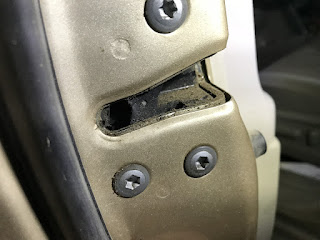Word on the street is that I have a machine that will tell me what is draining a battery overnight. No. But I do having testing equipment, system data, experience and patience. I also have a typical procedure, but is adaptable to match testing results.
First is, make sure the battery is good and fully charged. This means test and charge as needed. No guessing, no judging based on anything other than testing. This particular battery was new but discharged. You'll need a good, dependable battery charger that reports battery charge condition as a percentage. With the battery still connected to the car, I put the charger on and saw 0%. When my charger sees very low battery condition it goes into "battery saver" mode. Basically that is a trickle charge until the battery begins accepting more charge. So I'm connected and charging in "battery saver" mode, battery is connected to the car. Three minutes later I am showing 99% percent charge, which is a sign of a bad battery or I do have a large drain on the battery and it is interfering with the charge. Disconnecting the battery cables and charging the battery independently gave me a 19% charged reading and more normal charging. I tried testing the battery and saw that I was not going to get by without a charge.
A slow charge is a good charge so this was going to be an overnight charge. You always want to feel the sides of the battery case for any overheating or watch for any over venting, or acid boil. Internal battery faults can cause dangerous conditions and you don't want the car sitting on an overnight charge unless it is safe to do so. Next morning battery is charged and good. I make the first battery test with a load tester, then the digital tester.
Reconnect the battery to the car, making sure the connections are good.
Next step, check the alternator is working properly. At this point all we really have to know is that the alternator is charging the battery when the engine is running. Even though the complaint is a battery draining overnight, the alternator not working properly could cause the battery to be low when the car is shut off, and discharged next morning based on the fact the battery had low voltage when parked. We can do a simple voltage test at the battery and get enough information. Just put a dependable voltmeter on the battery and note the voltage, key off. Start the car and note the voltage with the engine running, if the voltage is more the alternator is charging the battery. That is all we have to know for the purpose of going further in battery drain testing. (Note: if you find your alternator is not working, it does not mean your alternator is bad. It means the charging system needs further testing.)
Was that the problem? A door ajar light staying on? I can verify that. There are two ground cables off the battery and two positive cables. You can check current draw on either positive or negative but you have to check any cable that feeds off that side. The two positive seemed to have enough room for the clamp. I use a clamp because I can do that without disturbing the circuit.
I'm looking for excessive current draw and there is none. I disconnected the sensor at the trunk latch and put the tarp strap back in place. There are limited places to attach a tarp strap on this trunk lid for sure. Now if we had to do this the more tedious way, as in a problem less easily noticed, we would have began pulling fuses, relays, power feeds, etc as we looked for the excessive draw to lead us to the fault.
This one, not so difficult.
Kenneth Hayes
Kenny@ggauto.repair


















